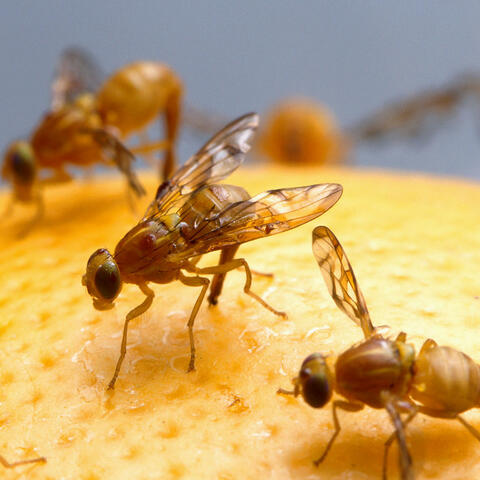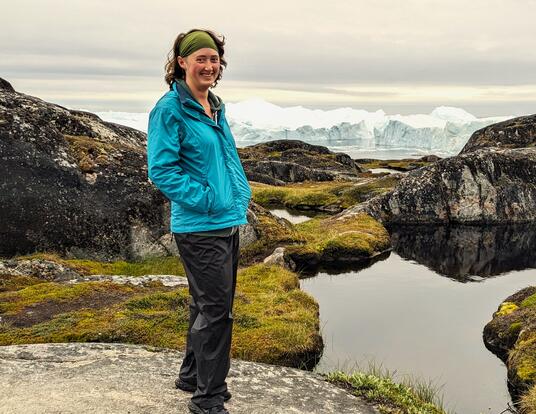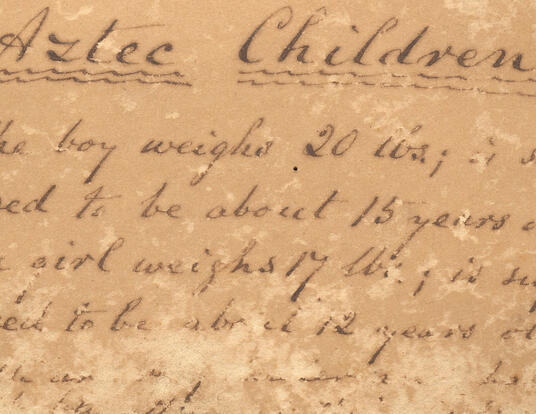Twisting the Light Fantastic
Lifelong tinkerer Adam Cohen opens the door to creative discovery in the lab
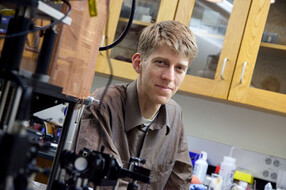
Growing up on the east side of Manhattan, Adam Cohen didn’t have a typical upbringing. He didn’t have a functioning TV, for one. Instead, he lugged home broken TVs, along with computers and microwaves he had found in garbage bins, and took them apart and repaired them in his bedroom. He also built gadgets — a microscope, for instance, and a contraption that allowed him to shift a computer cursor by moving his eyes. His parents, both professors, not only tolerated this behavior — they encouraged it.
“The only rules were that I couldn’t electrocute myself or take apart working equipment in the house,” says Cohen, AB ’01, assistant professor of chemistry and chemical biology and of physics. “Everything else was fair game.”
His friendship with a Liberian science technician at his high school was formative. At lunchtime, Asumana Jabateh Randolph would conduct impromptu science demonstrations, showing students how to make a pickle glow by running electricity through it, for instance. Soon, Cohen was president of the school’s science club, where his first order of business was to buy a video microscope so that club members could watch the erratic bouncing of water particles on television.
That sense of wonder guided him through his academic life, from his undergraduate years at Harvard to his PhD training in theoretical physics at the University of Cambridge and experimental physics at Stanford. With his Stanford advisor, physical chemist W. E. Moerner, he developed a tool for trapping individual fluorescently labeled particles in a solution and keeping them still. The device, known as the Anti-Brownian Electrokinetic (ABEL) trap, enables researchers to examine DNA, proteins, vesicles, viruses, and other molecules for long periods of time.
Making Waves
Cohen continued this line of research after joining the faculty at Harvard in 2007, but he was open to exploring new areas, too. He attracted students from several departments, including chemistry, physics, applied physics, and biophysics, and rather than assign projects, he sat down with them and asked, “Of all the possible things our lab could work on, what would be the most interesting and unusual things we could do?”
Lab members began addressing questions that aren’t confined to particular fields. “I prefer to start with something about the world we want to explore, and then take from whatever disciplines are needed,” Cohen says. “Harvard is a very conducive environment for doing that.”
“In most labs, there’s usually a core idea — they study one protein or one pathway or one system — but Adam’s really all over the place,” says Alex Fields, a biophysics PhD student who has worked in the lab since its inception and is helping to refine the ABEL trap. “The problems he approaches demand a lot of creativity, and he handles all of that while still having a day-by-day sense of what people in the lab are doing.”
Cohen’s ingenuity is bearing fruit. Last year, he received the Presidential Early Career Award for Scientists and Engineers and the National Institutes of Health New Innovator Award. And in a project that stemmed from a late-night brainstorm session, he discovered a new physical attribute of light, called optical chirality.
Molecules come in mirror-image forms, and this handedness, or chirality, governs how they interact with each other. A molecule’s handedness also interacts with certain properties of light, although the effects are subtle. For example, by changing the orientation of light waves’ oscillations (or the polarization of light), it’s possible to stimulate one form of a particle slightly more than its mirror-image version.
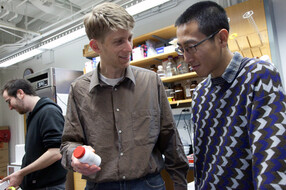
Cohen figured that he could strengthen the influence of light on molecules by warping light waves. In a mammoth undertaking that lasted three years, he and his team used lasers and mirrors to mold the 3D shape of electromagnetic fields, making them super-chiral, or extra twisty. Their experiments confirmed that curvy light can preferentially excite molecules with a particular handedness. Compared with other types of light, super-chiral light is 10 times more selective for one form of a particle than for its mirror-image counterpart.
“People had never really thought about the idea that light itself could have this handedness, and that this handedness could be a tunable property,” Cohen says. “The idea that you can sculpt the shape of the light in order to interact with molecules in a specific way is something that hasn’t really been considered very much before.”
Because light can initiate certain chemical processes, the technique may allow researchers to control the chirality of the end products, perhaps even those made in the pharmaceutical industry. The two mirror-image versions of a medication can have drastically different consequences inside the body. Drug manufacturers use procedures that favor the synthesis of particles with the desirable handedness, but they aren’t foolproof. Cohen’s method could bias reactions in the right direction and spot bad batches of drugs. It could even detect the presence of life on Mars, because many biological building blocks, such as DNA and amino acids, exist in only one chiral form. In the future, he would like to investigate how controlling molecules with light could be used to design optical sensors and reveal trace levels of explosives, narcotics, and environmental pollutants.
Liberia Bound
Cohen’s ambitions outside the lab are just as far-reaching. Inspired by aid work done by his old science club advisor Asumana Randolph, he started an outreach project in the West African nation of Liberia, whose education system was destroyed by civil wars lasting from 1989 to 2003. Classrooms and school buildings were damaged, many teachers fled the country, and a whole generation missed out on an education.
In 1994, Randolph formed a group called the I-Help Liberia Project. He couldn’t visit his home country during the conflicts, so instead, he shipped over surplus school supplies, starting with pencils and books and later including larger items, such as desks and computers. Once the war ended, he returned to Liberia to help distribute supplies and rebuild schools, often taking his New York high school students with him.
Several years ago, Cohen invited Randolph to give a talk at Harvard about his efforts in Liberia. “It was amazingly inspirational, and it was obvious that he was making a big difference there,” says Cohen, who soon decided to organize a series of instructional workshops in the country with the help of his childhood friend Benjamin Rapoport, an MD/PhD student at Harvard and MIT.
The pair spent a few weeks over the past couple of years in Liberia. The first summer, they traveled to schools in the countryside and in the capital city of Monrovia, where they met with government officials and civic leaders to discuss how they could apply their knowledge to meet the educational needs. They saw that labs had been robbed of most of their paraphernalia, that teachers often didn’t know how to fix or use the remaining instruments, such as balances and microscopes, and that many labs stayed locked up.
So the duo bought provisions at local markets. They built scales using rubber bands, water bottles, and other available materials. They extracted DNA from tomatoes using kitchen utensils, soap, salt, and rubbing alcohol. They used a wood stove, water, and a thermometer to calculate the energy content of rubber, a major national export.
“Our goal was to show people that you don’t need fancy experimental equipment to do science,” Rapoport says.
Cohen and Rapoport eventually realized they could make a greater impact by focusing on higher education. During their second Liberian trip, they conducted workshops at universities and vocational schools, where they combined classroom and lab exercises to teach instructors how to teach science. They also launched an online journal called the Liberian Scientist. “Their main complaint was that they had been completely isolated for 15 years,” Cohen explains.
Early signs suggest the strategy is working. Many workshop participants not only have incorporated the principles into their own classrooms, but they’ve also spread them to villages nationwide. Cohen hopes the lessons will reach a curious boy or girl whose tinkering with pickles, metal nails, and copper wire will one day lead to scientific breakthroughs in the lab.
Get the Latest Updates
Join Our Newsletter
Subscribe to Colloquy Podcast
Simplecast Stitcher


